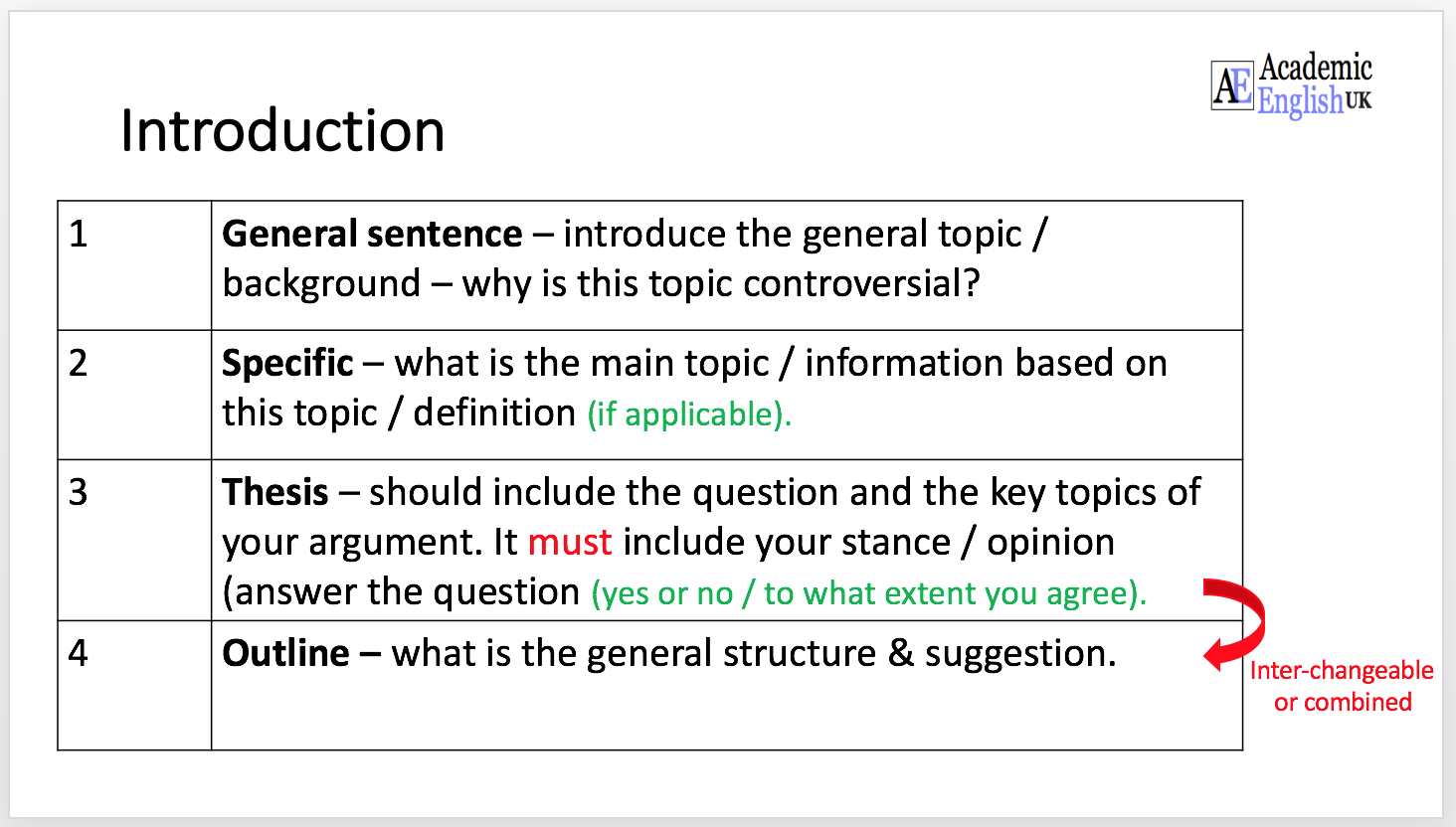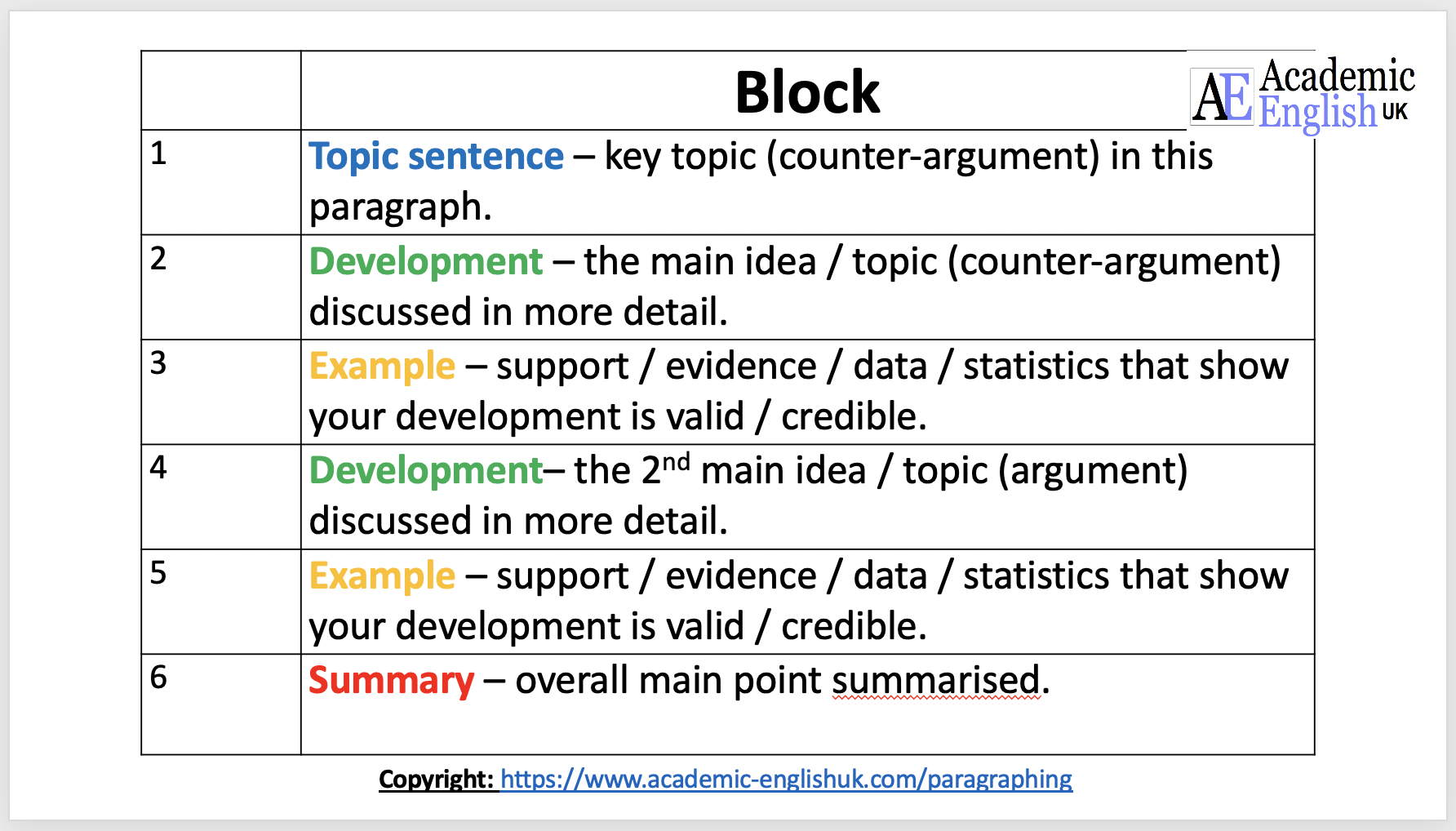Style and Structure
Academic writing style requires following certain rules. The writers should not use idioms and phrasal verbs, deceitful language, euphemisms, group-specific jargon, biased and stereotypical language. Notably, it is very important to use language that fits your audience and matches your purpose. Here is the interesting and credible source with an overview of the appropriate language for essays:
https://owl.purdue.edu/owl/general_writing/academic_writing/using_appropriate_language/index.html
Additionally, if not required otherwise, American English is preferable. There is a comprehensive list of American vs British English spelling that might be interesting and helpful when hesitating which is the appropriate choice for the essays:
http://www.tysto.com/uk-us-spelling-list.html
Also, you should maintain inclusive writing in your essays. “Man” and words ending in “-man” are the most commonly used gendered nouns in English. These words should be replaced with more neutral language. To avoid gender-biased language, when referring to an individual, do not use ‘he’, replace it with ‘he or she’ or ‘they’. Source:
https://writingcenter.unc.edu/tips-and-tools/gender-inclusive-language/
Unless the type of assignment requires otherwise, avoid using personal pronouns such as I, we, youand remain impersonal.
Avoid using interrogative, imperative, or exclamatory sentences. Do not use incomplete sentences (those that do not contain a subject or a predicate).
Do not use contractions in academic writing (don’t, can’t, I’m, and so on).
Concise, Clear, and Precise Writing
To convey the intended meaning of an academic essay to its readers, the writing should be clear, concise, and precise. The words should be chosen deliberately, and the sentences should be constructed carefully to provide the clarity of all ideas. Here are very helpful resources:
http://grammar.ccc.commnet.edu/grammar/concise.htm
Transitional Words and Phrases
Linking devices help to understand the logic of the writing and make it cohesive. Here is the useful link with the list of some of the transitional words and phrases:
https://student.unsw.edu.au/transition-signals-writing
Essay Structure
The following parts are the inevitable components of any essay (excluding the specific types of papers):
- Introduction with a Thesis Statement
- Main Body
- Conclusion

Introduction: 10-20% of the essay, does not include citations, gives a background to the topic; the last sentence of introduction is a thesis statement.
Thesis statement represents the main idea of the essay; it is a brief resume of the work in one or two sentences. It must be assertive, specific, and concise. Read the difference between purpose and thesis statement here:
https://writing.wisc.edu/Handbook/Thesis_or_Purpose.html
and always use a THESIS STATEMENT in your essays.
Body paragraph should contain the following elements:
 1) A Topic Sentence, 2) Elaboration of the Point, 3) Examples and Evidence to Support your Point (Quotations and Paraphrases), 4) Explanation of Evidence, 5) A Concluding Sentence, and 6) A Transition Between Paragraphs or Back to Your Thesis
1) A Topic Sentence, 2) Elaboration of the Point, 3) Examples and Evidence to Support your Point (Quotations and Paraphrases), 4) Explanation of Evidence, 5) A Concluding Sentence, and 6) A Transition Between Paragraphs or Back to Your Thesis
Each body paragraph should correspond to a topic mentioned in your thesis statement. Each first sentence of each body paragraph is called a topic sentence and is written according to the thesis statement. A topic sentence represents the main idea of the paragraph.
The minimum size of a body paragraph in academic papers is four lines, three – four well-developed sentences.
Each essay needs at least two body paragraphs, but you can have as many body paragraphs as you need. The body paragraphs help to develop the thesis statement.
Important: The first sentence of a body paragraph (a topic sentence) cannot be a citation. The last sentence of a body paragraph (a concluding idea, a transition to the next paragraph) cannot be a citation. Citations should be located in the middle of each body paragraph as evidential support provided to prove the idea expressed and developed in the paragraph.
 Conclusion: 10-20% of the essay; it is the last paragraph, which restates the thesis, wraps up the essay, and summarizes the main points; it may also include a prediction of an outcome or a call for action. Do not use new information and citations in conclusion!
Conclusion: 10-20% of the essay; it is the last paragraph, which restates the thesis, wraps up the essay, and summarizes the main points; it may also include a prediction of an outcome or a call for action. Do not use new information and citations in conclusion!
Common Grammatical Issues
Long Sentences
Avoid using long sentences. Do not write in a too sophisticated way, just keep it simple and clear. One sentence should be no more than three lines.
Punctuation in Compound Sentences
Review the general rules on punctuation in compound sentences:
https://webapps.towson.edu/ows/sentences.htm
Here is the basic scheme:
- Dependent clause, independent clause
- Independent clause dependent clause
- Independent, nonessential dependent clause, clause.
- Independent essential dependent clause.
When a conjunctive adverb connects two independent clauses in one sentence, it is preceded by a semicolon and followed by a comma. If a conjunctive adverb is used in any other position in a sentence, it is set off by commas. Here is a link to the punctuation rules on using conjunctive adverbs:
https://writing.wisc.edu/handbook/grammarpunct/conjadv/
Comma in a Series of Items
The next issue is using a comma in a series of items. Use commas to separate words and word groups in a simple series of three or more items. When the last comma in a series comes before ‘and’ or ‘or’, it is known as the Oxford comma. Here is the rule:
http://englishplus.com/grammar/00000070.htm
Comma in Restrictive / Nonrestrictive Clauses
This rule is often mistreated. A nonrestrictive clause provides an additional information and can be omitted; this clause should be separated with commas. A restrictive clause gives essential information and cannot be omitted; this clause does not require commas.
Here is the useful link:
Integrating Quotes into Sentences
The main rule here: a quote must be integrated into your sentence – you should never have a quotation standing alone as a complete sentence.
Here is the useful link on how to integrate quotes in the sentences:
https://owl.purdue.edu/owl/general_writing/punctuation/quotation_marks/index.html
Articles with Geographical Names
There are no articles with the names of continents, mountains, islands, streets, cities, states, lakes, while they are present in the names of the points of the globe, mountain ranges, island chains, geographical areas, rivers, seas, oceans, deserts, peninsulas, groups of lakes. For more information, use this source:
https://www.grammarly.com/blog/geographical-use-the/
Word Order and Placement of Adverbs
The word order in English is strict. Inversion in academic style is not welcomed.
Adverbs are often misplaced. Here is the useful link on the placement of adverbs:
Verb Tense Consistency
The verb tense consistency on the essay level:
Use present tense when writing essays about your own ideas, factual topics, the action in a specific movie, play, or book.
Use past tense when writing about past events, completed studies or findings, arguments presented in the scientific literature.
Use future tense when writing about an event that will occur in the future.
Here is the helpful link on the verb tense consistency on the sentence, paragraph, and essay levels:
https://webapps.towson.edu/ows/tenseconsistency.htm
Common Formatting Issues
Titles in MLA and APA Text (the same)
For titles of longer works (self-contained and independent) such as books, edited collections, movies, television series, documentaries, albums and titles of article containers (journals, magazines, websites, etc.) – use title case (all critical words capitalized), italics, no quotation marks.
For titles of shorter works (sources that are parts of larger works) such as journal articles, articles from edited collections, television series episodes, and song titles – use double quotation marks, title case
Titles in MLA Works Cited Page
Titles of works (books, articles, etc.) must be written in title case.
Names of articles must be put in quotation marks, not italicized.
If it is an article, the name of its container (periodical, database, website, etc.) must be italicized, in title case.
| MLA | in Text | Works Cited |
| Titles of longer works and titles of containers | italics, title case | italics, title case |
| Titles of shorter works | double quotation marks, title case | double quotation marks, title case |
Titles in APA Reference Page
Titles of books are written in sentence case (capitalized as a sentence), italicized, without quotation marks.
Titles of articles must be written in sentence case, not italicized, without quotation marks.
If it is an article, the name of its container (periodical, database, website, etc.) must be italicized, without quotation marks, title case.
| APA | in Text | References |
| Titles of longer works and titles of containers | italics, title case | italics, title case |
| Titles of shorter works | double quotation marks, title case | sentence case |
Example of APA Style In-Text Citation
The correct APA style in-text citation can be described by the following scheme: (Author’s surname, publication year). For a direct quote: (Author’s surname, publication year, page number).
Examples:
The study supported the idea and provided the relevant statistical results (Smith, 2015).
Smith (2015) supported the idea and provided the relevant statistical results.
The study supported the idea by stating that “the statistical results prove the existence of the problem” (Smith, 2015, p. 114).
Example of MLA Style In-Text Citation
The correct MLA style in-text citation can be described by the following scheme: (Author’s surname page number).
Examples:
The study supported the idea and provided the relevant statistical results (Smith 114).
Smith supported the idea and provided the relevant statistical results (114).
Important: The above-mentioned in-text citations are the most commonly used ones. However, there are many more rules on APA, MLA, Chicago, Harvard, and other formatting styles which you should know.
Word Count
One double-spaced page equals 300 words. One single-spaced page equals 600words. Title page, table of contents, references/works cited/bibliography are not included in the word count.
12 pt. Times New Romans font is used in most paper formats.
Final Tips
Always proofread your papers. Grammarly is a useful tool to review your essays.
You may also want to check your papers on plagiarism. Quetext, Grammarly, Copyscape are some of the good software for plagiarism detection.

Practice arranging your work here
To further improve your writing skills check this free lumen course